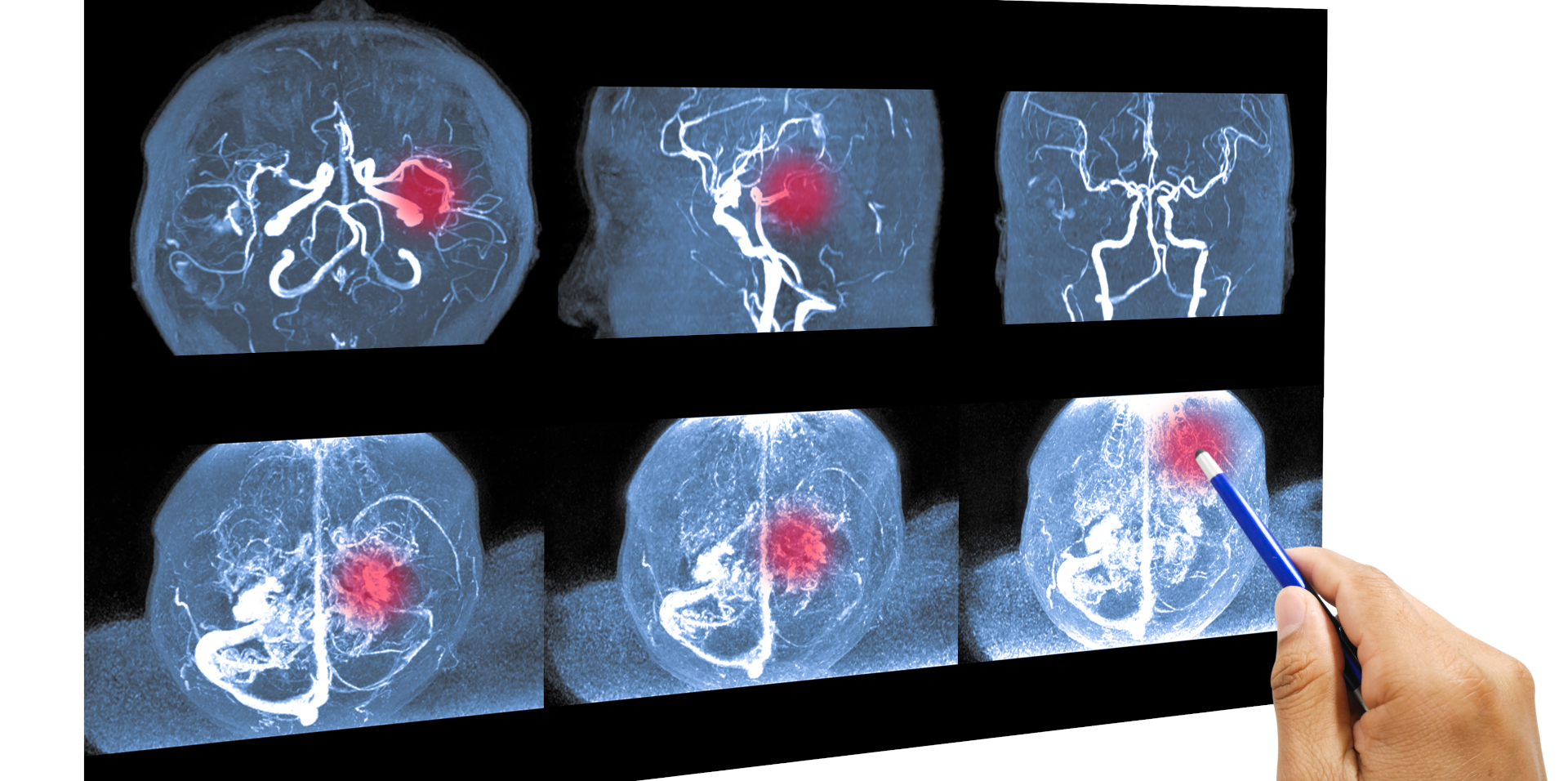Types of strokes
If the blood supply to the brain is interrupted by a blockage, a stroke occurs. The stroke has many different names e.g. apoplexy, insult or brain attack. Various symptoms can occur such as paralysis, loss of sensation or blindness.
- Ischemic stroke
Das ist der häufigste Hirnschlag. Er entsteht, wenn Blutgerinnsel ein Gefäss verstopfen. Die Nervenzellen im betroffenen Bereich erhalten zu wenig Sauerstoff. Diese können dadurch Schaden nehmen und auch nach einigen Minuten absterben. - Cerebral hemorrhage
A cerebral hemorrhage is less frequent. It happens when a vessel in the brain is injured, causing blood to flow into the brain tissue and thus irritating the brain - chemically and mechanically. - Subarachnoid hemorrhage
Subarachnoid hemorrhage occurs when a vessel on the meninges ruptures. This causes blood to accumulate between the meninges and the brain.
Symptoms
A stroke is an absolute emergency. Every minute counts - you must react quickly and correctly. (Call 144 immediately and follow their instructions). Often the following symptoms occur:
Sudden loss of sensation, paralysis or weakness in the face, arm or leg (usually only on one side of the body), blindness, blurred vision, double vision, slurred speech, difficulty understanding others, difficulty walking, dizziness and severe, unusual and sudden headaches.
Do you have a finding and would like a second opinion or are you not sure whether you suffer from risk factors for a stroke? One of our specialists will be happy to take the time for a consultation.
Transient Ischemic Attack (TIA)
The so-called "mini stroke" often occurs as a premonition of a real stroke. Here the symptoms disappear within 24 hours and leave no traces. However, caution is advised, and this warning should be taken seriously. It is important to find out why a transient ischemic attack has occurred and what the cause is.
Acute treatment
Time is brain! Up to two million brain cells are destroyed per minute during a stroke. It is therefore important that the patient is admitted to a specialized clinic with a stroke unit as fast as possible. Every minute counts. The faster treatment is carried out, the greater the chance that the patient will survive with as little consequential damage as possible.
If the tests show that a cerebral hemorrhage can be ruled out, thrombolysis is performed intravenously to dissolve the clot (thrombosis) that led to the stroke. In the case of larger occlusions of the central cerebral vessels, the clot can be removed interventional with a catheter.
Risk factors
The following risk factors can lead to a stroke:
Arterial hypertension: High blood pressure leads to damaged vessels, bleeding and clots.
Atrial fibrillation: Is the most common cardiac arrhythmia that can cause a stroke. Atrial fibrillation can cause clots to form in the left ear of the heart or taking blood thinners can lead to internal bleeding.
Other risk factors are: Increased blood lipid levels, unhealthy food, too little exercise, smoking, obesity or sleep apnoea syndrome. Those are all risk factors for atrial fibrillation as well. The risk of a stroke and atrial fibrillation can be reduced significantly by reducing the risk factors.
CHA2DS2-VASc-Score
The CHA2DS2 VASc Score is a clinical prediction rule used to estimate the risk of stroke in patients with atrial fibrillation. Such a score is used to determine whether blood thinning is necessary or not. A high score corresponds to a higher stroke risk, a low score to a lower stroke risk. Another option instead of blood thinners is a LAA closure.
Here you can find a link to calculate the CHA2DS2-VASc-Score yourself.
Checklist
In an emergency, call 144 immediately. Every second matters!
Check if the person concerned has a stroke
- Ask the person to smile. If the face is contorted on one side, this indicates hemiplegia.
- Ask the person to stretch their arms forward while turning their palms upwards. In case of paralysis, both arms cannot be raised.
- Ask the person to repeat a simple sentence. If he or she is unable to do this or if the voice sounds fuzzy, it is probably a speech disorder.
If the person shows signs of a stroke
- Call 144 immediately and be sure to mention suspected stroke!
- Do not leave the person affected alone, lie comfortably with a slightly raised upper body and calm down.
- Loosen restrictive clothing, remove loose dentures.
- Do not give anything to eat or drink as swallowing may be disturbed.
- In case of vomiting or unconsciousness, put the patient in the stable lateral position.
- Check pulse and breathing.
- If no pulse can be felt and no respiration can be detected, start resuscitation measures immediately. Place the patient on a hard surface, e.g. the floor, and start CPR and breathing.
